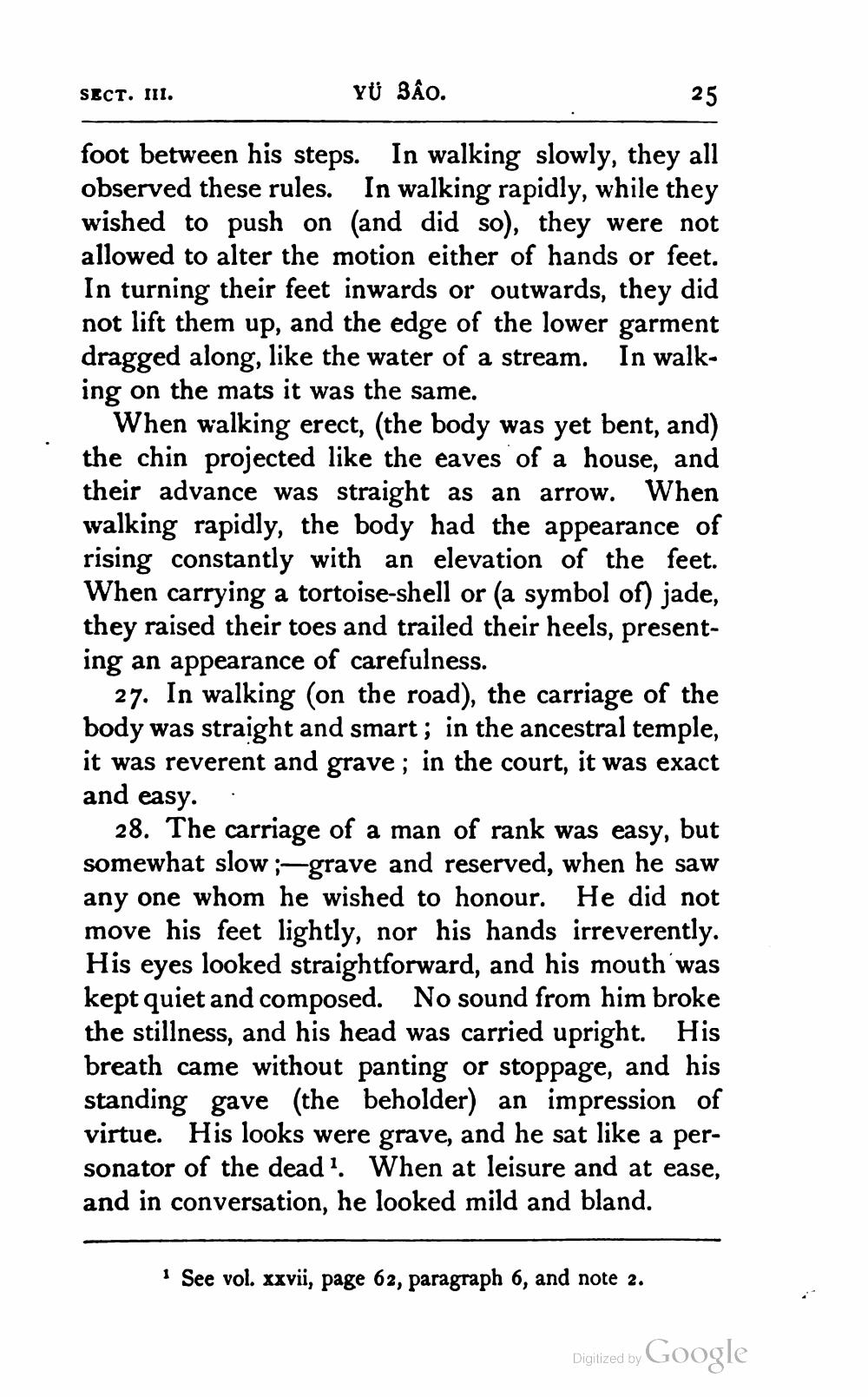________________
SECT. II.
YÜ 3o.
foot between his steps. In walking slowly, they all observed these rules. In walking rapidly, while they wished to push on (and did so), they were not allowed to alter the motion either of hands or feet. In turning their feet inwards or outwards, they did not lift them up, and the edge of the lower garment dragged along, like the water of a stream. In walking on the mats it was the same.
When walking erect, (the body was yet bent, and) the chin projected like the eaves of a house, and their advance was straight as an arrow. When walking rapidly, the body had the appearance of rising constantly with an elevation of the feet. When carrying a tortoise-shell or (a symbol of) jade, they raised their toes and trailed their heels, presenting an appearance of carefulness.
27. In walking (on the road), the carriage of the body was straight and smart; in the ancestral temple, it was reverent and grave; in the court, it was exact and easy..
28. The carriage of a man of rank was easy, but somewhat slow ;-grave and reserved, when he saw any one whom he wished to honour. He did not move his feet lightly, nor his hands irreverently. His eyes looked straightforward, and his mouth was kept quiet and composed. No sound from him broke the stillness, and his head was carried upright. His breath came without panting or stoppage, and his standing gave (the beholder) an impression of virtue. His looks were grave, and he sat like a personator of the dead. When at leisure and at ease, and in conversation, he looked mild and bland.
* See vol. xxvii, page 62, paragraph 6, and note 2.
Digitized by Google




